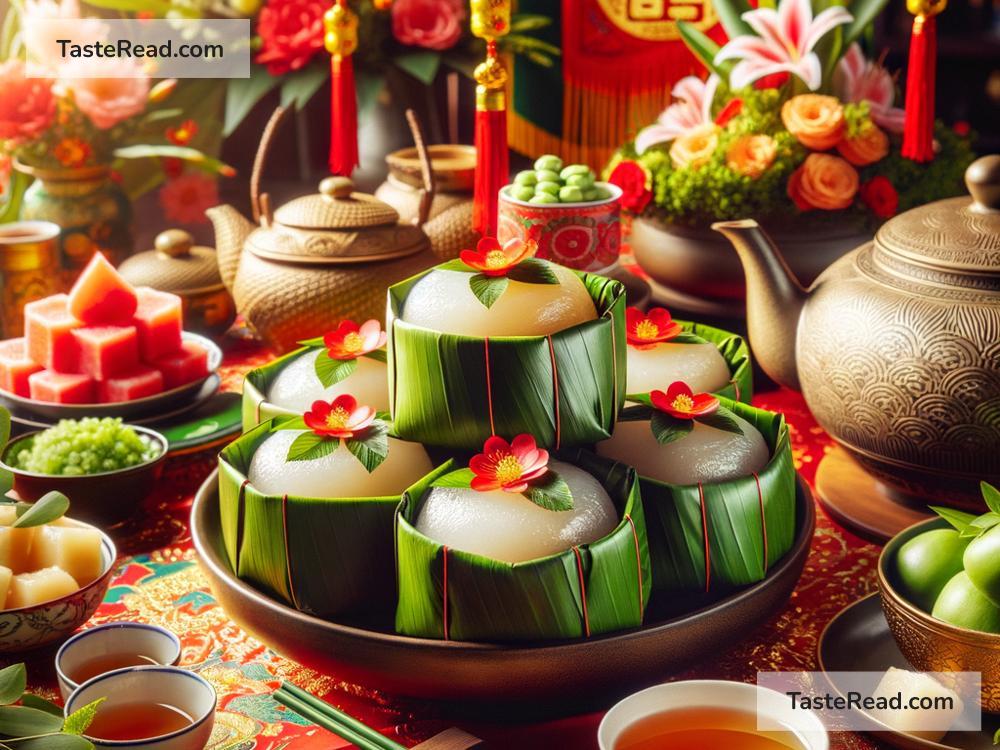The Story and Tradition of Bánh Chưng During Tet
Every year, as spring approaches, Vietnamese families prepare to welcome the most important holiday of the year: Tet, or the Lunar New Year. Tet is a time to honor ancestors, spend time with loved ones, and celebrate new beginnings. Among the many traditions that make Tet special, one stands out: the making and sharing of bánh chưng, a square-shaped sticky rice cake. This simple but meaningful dish carries a deep history and is a symbol of family, love, and gratitude.
What Is Bánh Chưng?
Bánh chưng is a traditional Vietnamese dish made from sticky rice, mung beans, pork belly, and spices. These ingredients are tightly wrapped in green banana leaves or lá dong (a type of leaf commonly used in Vietnam) and then boiled for several hours. The square shape of bánh chưng represents the earth, according to ancient Vietnamese beliefs, while its green color symbolizes nature and agricultural prosperity.
This dish is often enjoyed during Tet celebrations and is one of the most important foods for the holiday. It is more than just a delicious treat—it carries deep cultural significance and serves as a way for people to connect with their roots.
The History Behind Bánh Chưng
The story of bánh chưng begins in ancient Vietnam with a legendary prince named Lang Liêu. According to folklore, King Hung wanted to choose his successor and asked his children to create a dish that represented prosperity and harmony. While other princes created extravagant dishes with rare ingredients, Lang Liêu, the poorest of the king’s sons, offered a humble square cake made from locally available items: rice, beans, pork, and leaves.
Lang Liêu explained that his bánh chưng represented the earth, where humans live and cultivate food, and was a way to honor the gifts of nature. The king was impressed by Lang Liêu’s creativity and respect for tradition, and he chose Lang Liêu to be the next king. Since then, bánh chưng has been a symbolic dish, reminding people to appreciate nature and stay grounded in their heritage.
The Process of Making Bánh Chưng
One of the most meaningful parts of bánh chưng is the process of making it. Many families come together to prepare these cakes during Tet. Each step requires care and teamwork, making it a bonding experience for everyone involved.
-
Preparing the Ingredients: Sticky rice is soaked in water overnight to make it soft and fresh. Mung beans are steamed and mashed, and pork belly is marinated with salt and pepper for flavor.
-
Assembling the Cake: A square mold is often used to help shape bánh chưng. Green banana leaves are carefully laid out, followed by layers of sticky rice, mung beans, and pork belly. More sticky rice is added on top before folding the leaves neatly into a square package. The cake is tied tightly with bamboo strings to keep its shape while cooking.
-
Boiling: Large pots are used to boil bánh chưng for six to eight hours. As the cakes cook, families often gather around the fire, sharing stories and laughing together. This cozy atmosphere is an important part of Tet traditions, strengthening bonds within families and communities.
How People Enjoy Bánh Chưng During Tet
Once bánh chưng is cooked, it is usually offered to ancestors on the family altar as a sign of respect. Vietnamese families believe that their ancestors’ spirits join them during Tet, so preparing bánh chưng is a way to express gratitude and honor family members who have passed away.
After making offerings, everyone gathers to enjoy bánh chưng. It is often eaten sliced into pieces and served with pickled vegetables, fish sauce, or soy sauce. The sticky texture, salty pork, and sweet mung beans create a balanced and satisfying flavor. Some families even pan-fry bánh chưng to give it a crispy outer layer, adding an extra dimension to the traditional dish.
Bánh chưng is also shared as a gift during Tet. Giving bánh chưng to relatives, friends, and neighbors is a gesture of goodwill and a way to spread happiness and prosperity in the new year. Many people feel that bánh chưng, with its simple ingredients and handmade care, carries more meaning than expensive or fancy gifts.
Why Bánh Chưng Matters
In today’s fast-paced world, many people buy bánh chưng from markets instead of making their own. While this is convenient, the tradition of making bánh chưng as a family is still cherished by many. It’s not just about the food itself—it’s about spending time together, passing down knowledge, and strengthening family ties.
Bánh chưng serves as a reminder of Vietnam’s rich history and agricultural roots. It is a dish that ties people to their ancestors, to the land, and to one another. During Tet, bánh chưng becomes more than just food—it becomes a symbol of unity, gratitude, and hope for the coming year.
Conclusion
Vietnamese bánh chưng is more than just a rice cake. It is a cultural treasure, filled with meaning and history. During Tet, this humble dish brings people together to honor tradition, celebrate family, and welcome a new year filled with hope and happiness. Whether you make it yourself or receive it from a loved one, bánh chưng is a reminder to cherish the simple things in life and appreciate the bonds that connect us.


